By day, the sunny corner lot that houses Odell’s Bagels buzzes with morning regulars ordering expertly crafted open-faced sandwiches and bacon, egg, and cheeses while others quickly drop in to grab a coffee and an everything bagel with cream cheese to go.
But when the sun starts to set, a transformation takes place. Entering the restaurant on a Sunday evening, the usual bottles of ketchup, packets of sugar, and plastic garbage bins were nowhere in sight. In their place were carefully arranged vases of fresh-cut flowers, and a full row of wood and hunter green counter-height stools lined the bar. The space had taken on a new form: The Counter at Odell’s, a newly launched multi-course tasting experience offered Friday through Sunday evenings (with Thursdays added beginning May 22), which debuted on March 28, 2025.
Why it became a dual-concept dining space
Originally from New Jersey, Odell moved to Colorado during the pandemic for private chef work in Aspen, eventually deciding that Denver’s dynamic food scene was the right place to build something of his own. Odell first gained a local following with Keepsake, a farmers market that began serving intricately crafted Japanese bentos and sandos.
While his original plan for a brick-and-mortar focused on Japanese cuisine, the availability of the former Denver Bread Company space in the Highlands inspired a pivot toward another passion: bagels. He tested the concept by adding his bagels to the pop-up menu, where they quickly gained popularity. Recognizing the opportunity, Odell decided to merge both visions under one roof – creating a permanent home for his growing bagel business while also realizing his dream of opening a Japanese restaurant.
While it may not be immediately obvious what links a bustling bagel shop to a refined Japanese-inspired tasting menu, the connection is clear to Odell. He doesn’t view the daytime and evening programs as separate approaches to food, but rather as extensions of the same culinary philosophy – one rooted in the use of quality ingredients and preservation techniques, and touched by Japanese influences. And while those influences show up in the bagel menu in the form of furikake seasoning and smoked hamachi collar and salmon roe toppings, it’s in the evening, where Odell gets to fully tap into his fine dining background and go deeper and wider with his exploration of Japanese cuisine.
The influences behind Odell’s approach
Odell’s interest in kaiseki cuisine – a Japanese dining style akin to European haute cuisine that Odell describes as “simple yet complex” – is a natural extension of his training and mentors. Before landing in Denver, he spent years in New York, most notably within the kitchens of David Bouley, the influential chef celebrated for his command of French and Japanese techniques and for pioneering blind tasting menus in the US. It was at Bouley’s Upstairs at Bouley that Odell worked alongside Isao Yamada, a master of weaving Western ingredients into Japanese cuisine, from whom he learned the foundations of Japanese cooking.
Odell spent several years working in Japan, including time under Hiroshi Sasaki in Kyoto, where he received a masterclass in the principles of kaiseki – an experience that has deeply influenced his culinary approach to this day. He also holds a silver certification of Cooking Skills for Japanese Cuisine issued by Japan’s Ministry of Agriculture, Forestry, and Fisheries.
What makes kaiseki unique
In just about everything you’ll read about The Counter at Odell’s, the Japanese culinary art of kaiseki gets mentioned. Which – cool, right? But seriously, it’s worth taking a moment to understand the principles behind kaiseki in order to interpret and appreciate where the concept is coming from.
While a large portion of The Counter’s menu features nigiri sushi, calling it a high-end sushi spot – as I did before actually dining there – misses the mark. In its truest form, omakase – which loosely translates to “I leave it up to you” – is like a culinary DJ set, with the chef adjusting on the fly based on a diner’s reactions. It’s dynamic, personal, and never repeated.
Kaiseki, the conceptual opposite of both à la carte and omakase sushi in style and spirit. It’s about structure and flow – a carefully choreographed dance where the chef plans out the meal and the diner receives it. While both emphasize top-tier ingredients, kaiseki is specifically tied to seasonality and nature.
The word itself stems from Zen Buddhism, meaning “stones in the bosom” – a nod to warm stones monks would press to their stomachs during fasting. It came to describe the modest, seasonal meals served before tea ceremonies and later evolved into the refined culinary art it is today.
Putting a contemporary twist on tradition
While the experience is inspired by Odell’s love of the art of kaiseki, there’s a clear break from tradition in how that respect is expressed. There’s little attempt to recreate the hushed, cloistered ambiance often associated with the style of dining.
The Counter leans into its city setting and focuses on casual comfort rather than quiet contemplation. From a seat at the bar-top chef’s counter, you can gaze out the uncurtained windows and catch the flicker of headlights from buses and cars whizzing by. Mid-tempo jazz and funk tunes hum beneath the flow of conversation between guests and chefs. The sharp glassware and custom ceramics are the final hip and modern touches.
Though the atmosphere bucks the traditional trappings and ceremony of kaiseki, the food remains true to its roots. On the plate, Odell delivers his take on the seasonal cuisine he so reveres.
That relaxed energy, though, never slipped into carelessness. The front-of-house team, lead by GM Paul Lysek, tends to guests with a mix of efficiency and warmth, while the kitchen team – who include sushi chefs David Arnold and Zach Chapla, both alumni of Uchi – lean in from across the honey wood counter to share the stories behind each dish and ingredient with genuine enthusiasm.
A menu dependent on the freshest ingredients
True to tradition, each course is centered around a classic Japanese method of preparation – raw, steamed, grilled, and so on. Seasonality and sustainability takes the lead when it comes to sourcing ingredients. “I first like to see what is best close to us before ordering ingredients from the markets in Japan,” says Odell. Nearly all of the produce served during my visit – aside from the morels and truffles – came from Esoterra Farms in Boulder County. As the season progresses, the team plans to collaborate with even more local farmers. As a result of the changing availability of ingredients, the menu shifts weekly, with no two weekends exactly alike.
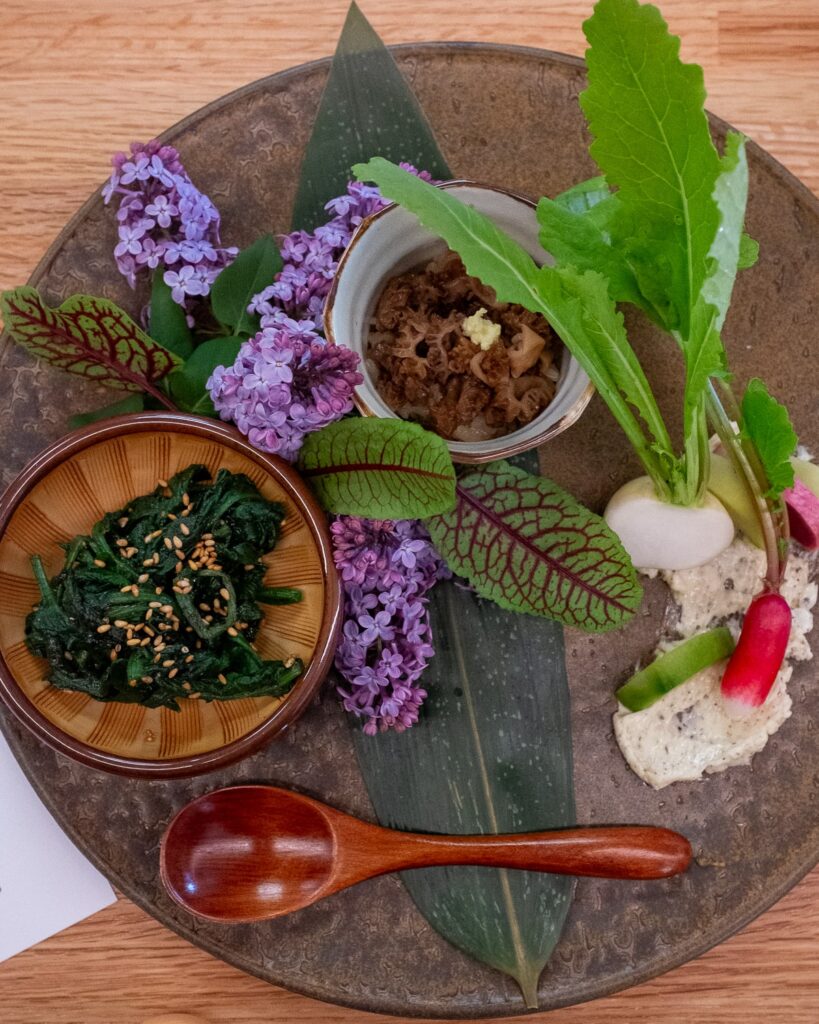
The first course, zensai, is an appetite whetting sampler designed by Odell to set the tone for the entire experience. “When local products are at their peak, they’ll be served fresh on our weekly menu,” he says. “It also gives us a good opportunity to preserve ingredients at their best for use on future menus throughout the year.” On my visit, the course featured a small bowl of Bloomsdale spinach, a cup of morels over rice, and a bouquet of local vegetables to be swiped through a rich nori butter.
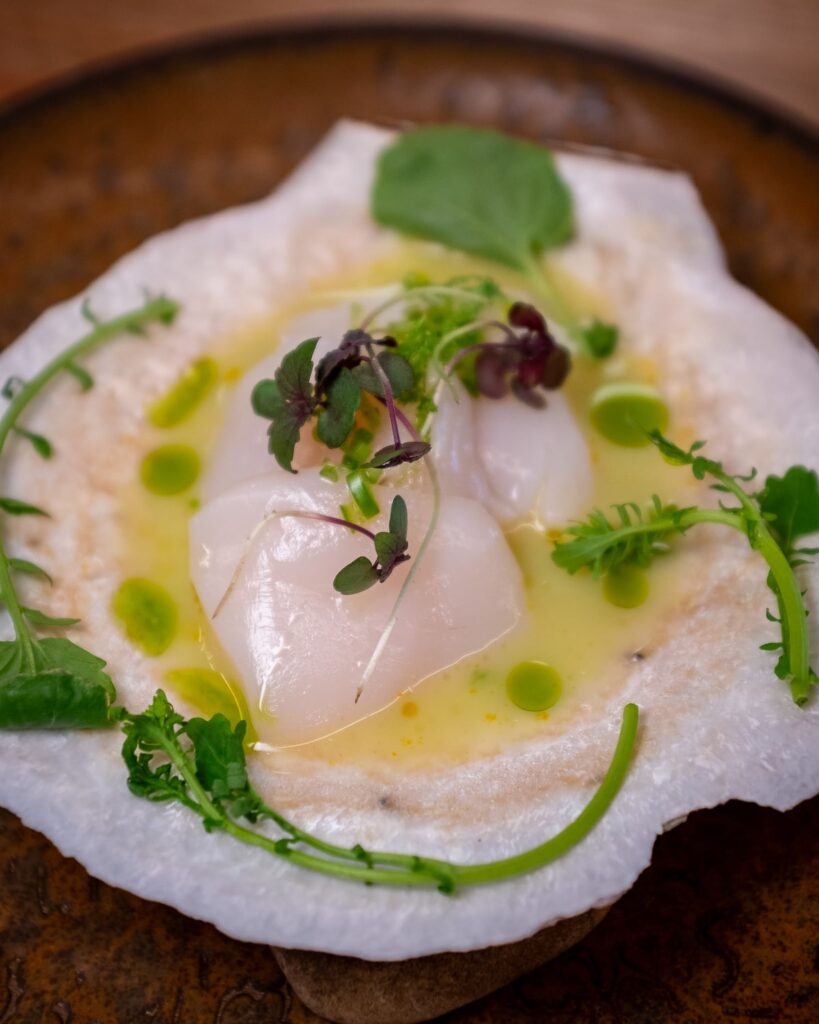
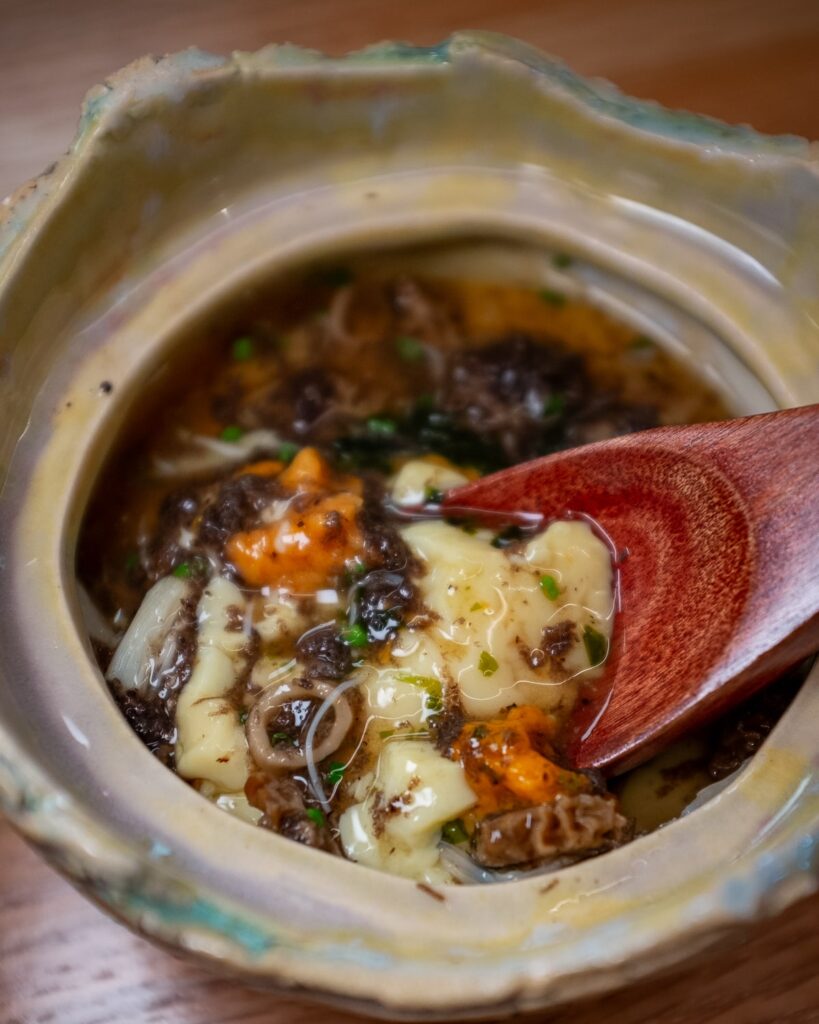
While much of the meal is grounded in the fundamentals of Japanese cuisine, there’s room for playful detours and global references. One such moment came in the raw course: Hotate scallop, sliced and served in a brightly seasoned marinade of aji amarillo pepper and lime juice – a dish born to showcase a team member’s great leche de tigre.
The steamed course returned to tradition with a silky chawanmushi, inspired by chef Odell’s time working under Yamada, who taught him that the dish is the perfect showcase for the power of dashi. Next, the grilled course: a frenched lamb chop from Superior Farms rubbed with Japanese sancho peppercorn for a tongue-tingling edge, and served alongside charred fava beans that can be plucked out by hand if your chopsticks skills fail you.
Nigiri plays a starring role
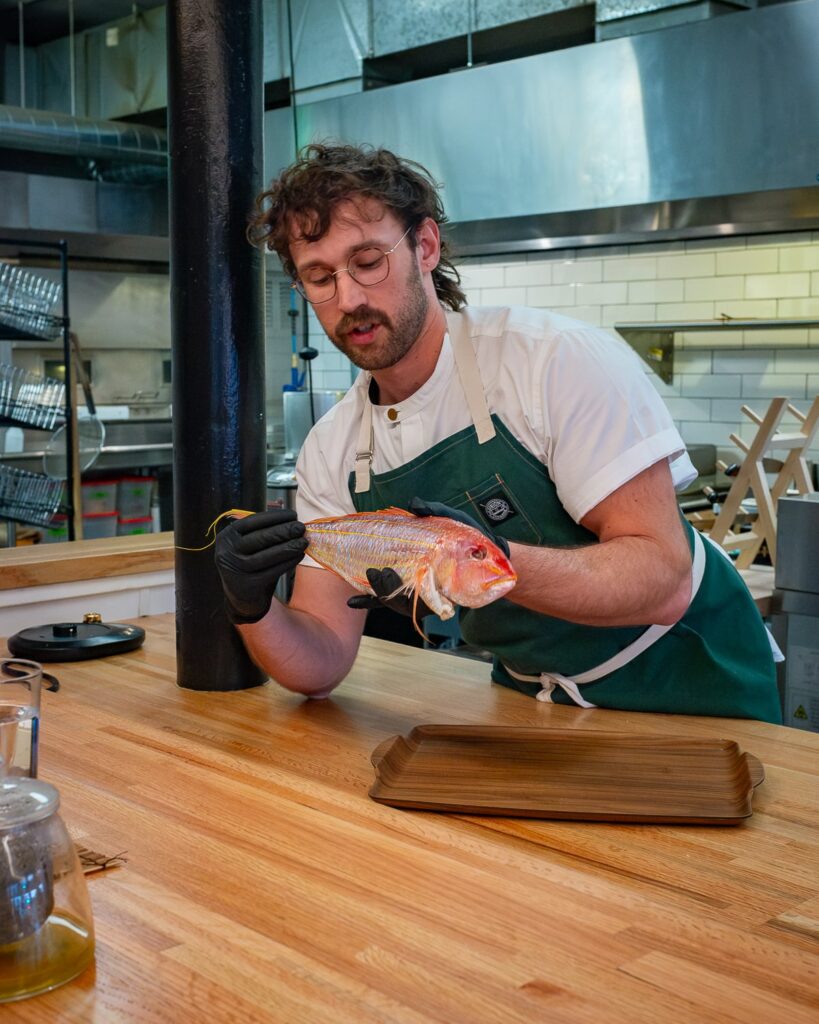
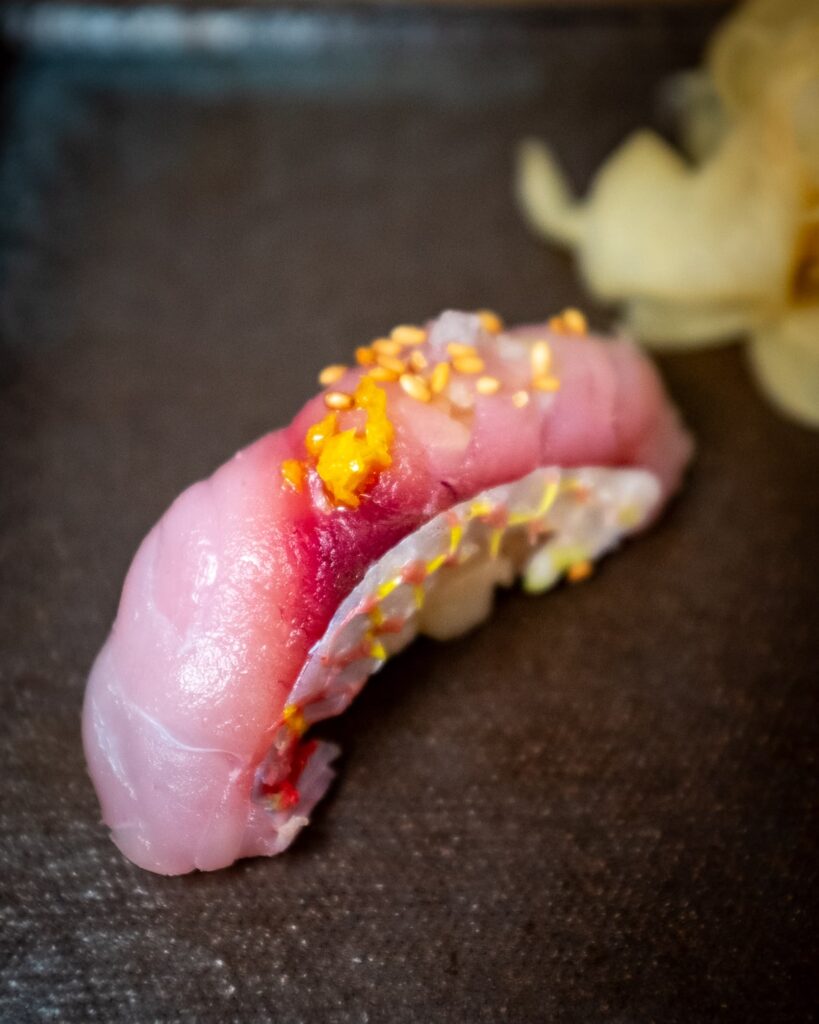
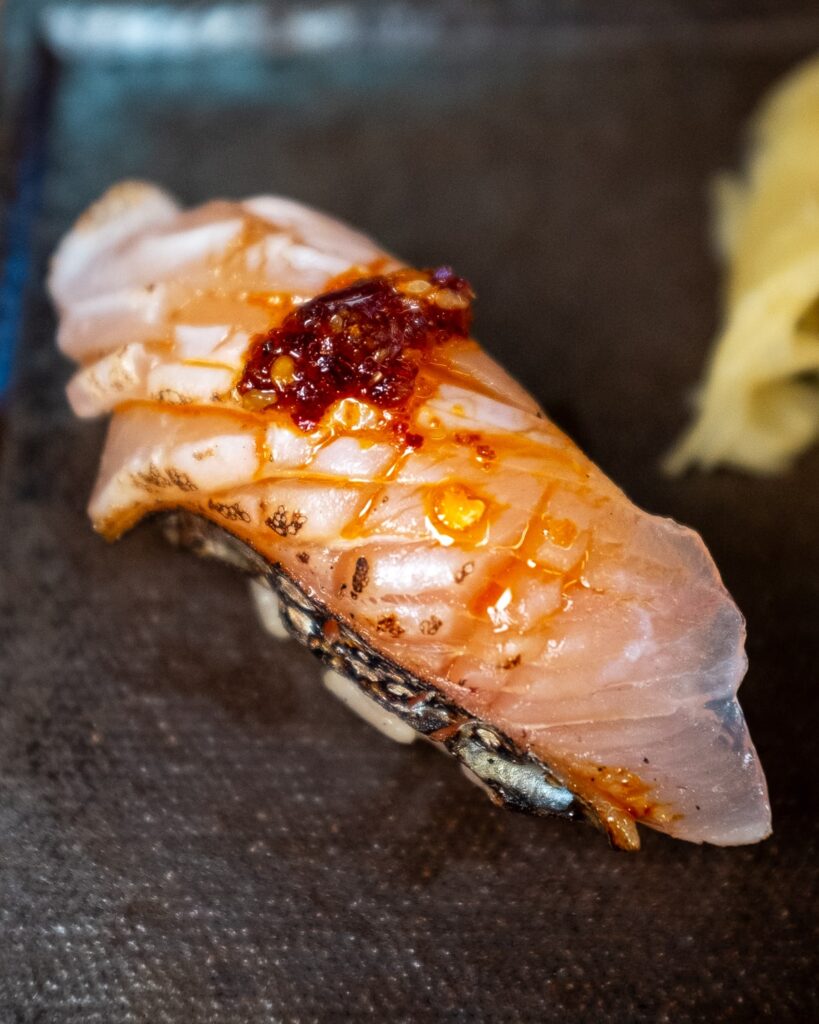
The biggest turn of the night came with an 11-piece nigiri progression – a tasting menu within the tasting menu, and easily a meal on its own. For Odell, it’s also a meaningful representation of his journey within Japanese cuisine and a chance to showcase precision and technique. “There is nothing to hide when it comes to making sushi,” he says. This section is designed to feature the teams’ personal favorites. During my visit those included two standout mackerel courses: aji (horse mackerel) with green onion and ginger relish, and sawara (Spanish mackerel) topped with chili crisp and a dash of Arnold’s house-made hot sauce.
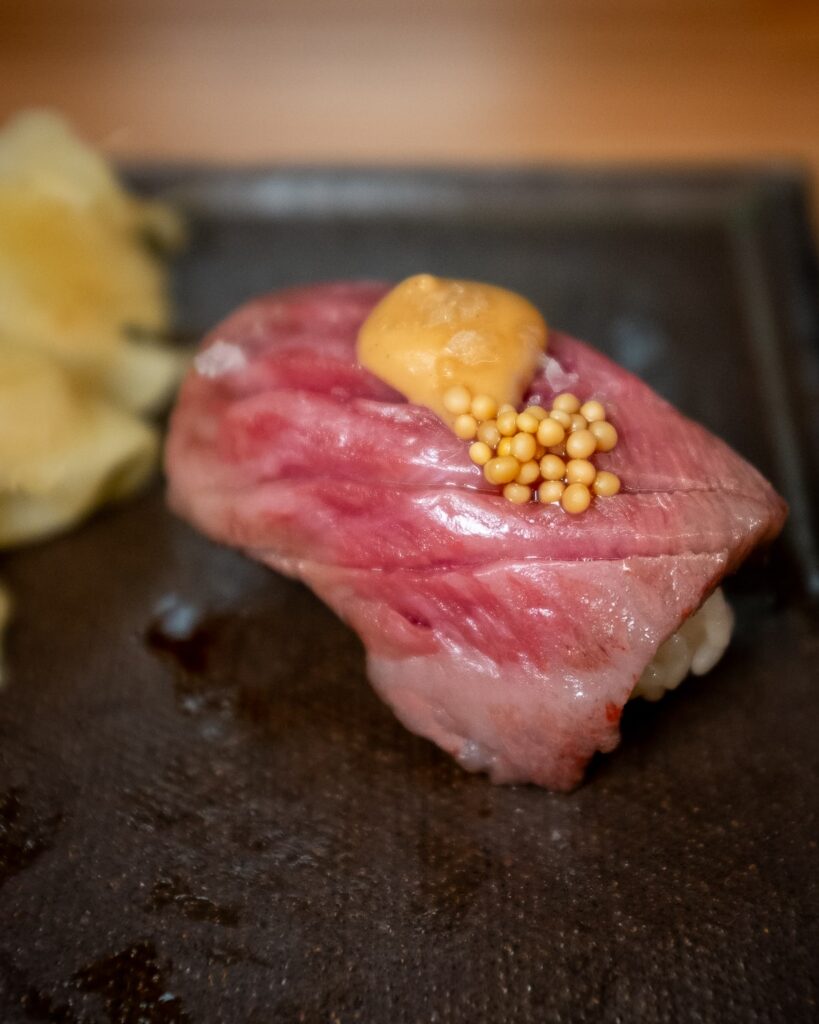
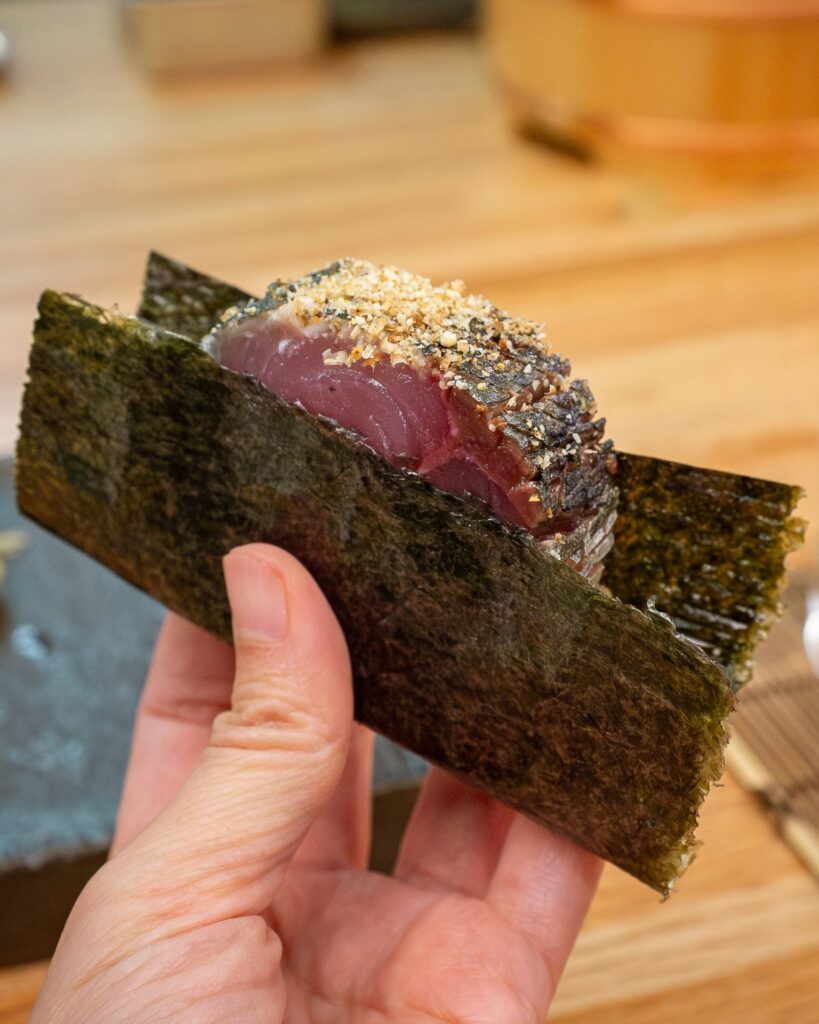
Day-of substitutions occur to make use of the best ingredients available – like a morel mushroom nigiri replacing the uni listed on the menu after an exceptional batch came in – while crowd-pleasers like otoro (bluefin tuna) and A5 wagyu round out the set. Later courses are accompanied by white miso soup, meant to be sipped between bites to aid digestion. The last of the nigiri was a sabazushi, a Kyoto specialty of pressed sushi using cured mackerel, seared tableside just moments before serving as a hefty handheld bite.
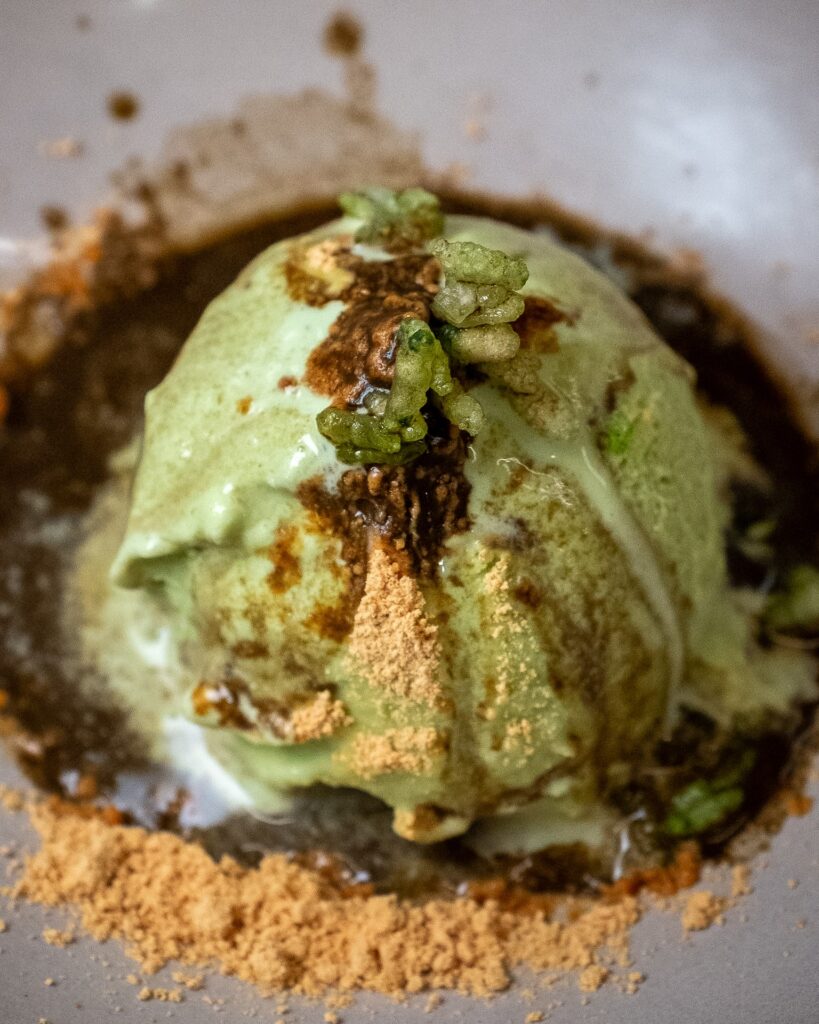
Dessert came in the form of a satisfying hojicha matcha affogato, with brewed hojicha and mugicha teas poured over ice cream – a spin on the Italian classic that uses the roasted barley tea to mimic the roasted depth of espresso. A sprinkle of crispy fried rice added the perfect crunch.
Balancing tradition with approachability
While it may not be a traditional kaiseki experience in form or atmosphere, The Counter seems well-tuned to what many Denver diners are likely to feel comfortable with – and perhaps crave. While Odell’s interpretation may break from the hushed rituals of its inspiration, the reverence for seasonality, restraint, and quiet technique is unmistakable. For those willing to surrender a bit of control and follow where the chef leads, the experience offers real rewards.
The details
The Counter at Odell’s (located at Odell’s Bagels)
3200 Irving St, Denver, CO 80211
$175 per person with optional beverage pairing at $85 per person. Please note, a 20% service charge will be applied to all checks. Reservations available on Tock.
Disclosure: This meal was hosted. My coverage remains entirely independent.
